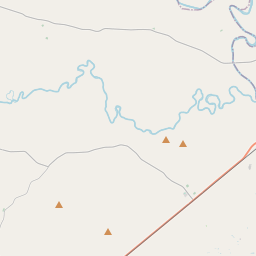Greater Riverside Cemetery







This cemetery has served the African-American community in Hearne and the old town of Hearne since 1894. The area was originally settled by farmers, many of whom brought slaves with them when they immigrated to Texas. Hearne, named for Christopher Columbus Hearne, was platted in 1868 and developed as a crossroads for rail traffic.This burial ground was originally named the New Colored Cemetery, though it was known by a variety of names over the years; it was most commonly called St. Mark's Cemetery until 1933, when it became known as Riverside Cemetery. The original burial ground was made up of twenty acres purchased by the Colored Cemetery Association. The Primitive Baptist Church donated an acre to the burial ground when they relocated from here in 1906, and St. Manuel Baptist Church added an additional three acres in 1948.The first known interment here was of Chaney Delila Henderson in 1896. Since that time, hundreds of burials have occurred here. The grounds hold an especially large number of military veterans, including those who fought in conflicts dating to the Spanish-American War. Among the cemetery's features are markers for members of the Mosaic Templars of American, a black fraternal association with few known chapters in Texas. The Greater Riverside Association formed in 1982 and maintan the 24-acre cemetery; the association also renamed the burial ground. Today, Greater Riverside Cemetery continues to serve as a testament to the rich African-American legacy in the community of Hearne.Historic Texas Cemetery-2007
As one of the most visible programs of the Texas Historical Commission (THC), historical markers commemorate diverse topics in Texas history, including: the history and architecture of houses, commercial and public buildings, religious congregations, and military sites; events that changed the course of local and state history; and individuals who have made lasting contributions to the state, community organizations, and businesses.
The University of Texas at Austin, founded in 1883, is one of the largest universities in the United States and has produced many notable alumni, including several U.S. presidents.
In 1837, the Texas Congress officially established Robertson County as one of the original counties of the Republic of Texas. During this time, the county experienced rapid growth with the influx of settlers from the United States, particularly from southern states such as Tennessee, Mississippi, and Alabama. These settlers primarily relied on agriculture, with cotton becoming a major cash crop in the region.
The county also played a significant role in the Texas Revolution and the subsequent formation of the Republic of Texas. The Battle of San Jacinto, a decisive battle that secured Texas independence from Mexico, took place just outside the county's borders in April 1836. Several notable figures from Texas history, including Sam Houston, were also closely tied to Robertson County.
Over the years, Robertson County has continued to thrive, with the economy diversifying beyond agriculture. While farming and ranching still remain important industries, the county has also seen growth in manufacturing, healthcare, and tourism sectors. Today, Robertson County is known for its small towns, rural beauty, and historical sites, attracting visitors and residents alike with its charming Southern atmosphere and rich cultural heritage.
Robertson County Timeline
This timeline provides a condensed summary of the historical journey of Robertson County, Texas.
- 1837: Robertson County is established from Milam County.
- 1846: The first county seat, Springfield, is established.
- 1854: The county seat is moved to Owensville.
- 1870: The town of Calvert becomes the county seat.
- 1873: The Houston and Texas Central Railway reaches Calvert.
- 1890: The St. Louis Southwestern Railway reaches Hearne.
- 1925: A portion of Robertson County is used to create Falls County.
- 1942: Camp Hearne, a World War II prisoner-of-war camp, is established.
- 1987: The Hearne Southern Pacific depot is added to the National Register of Historic Places.